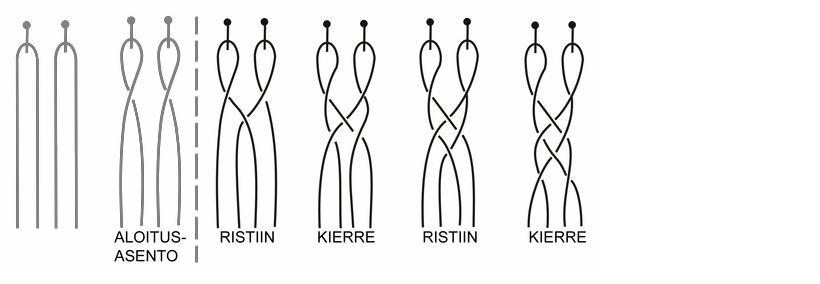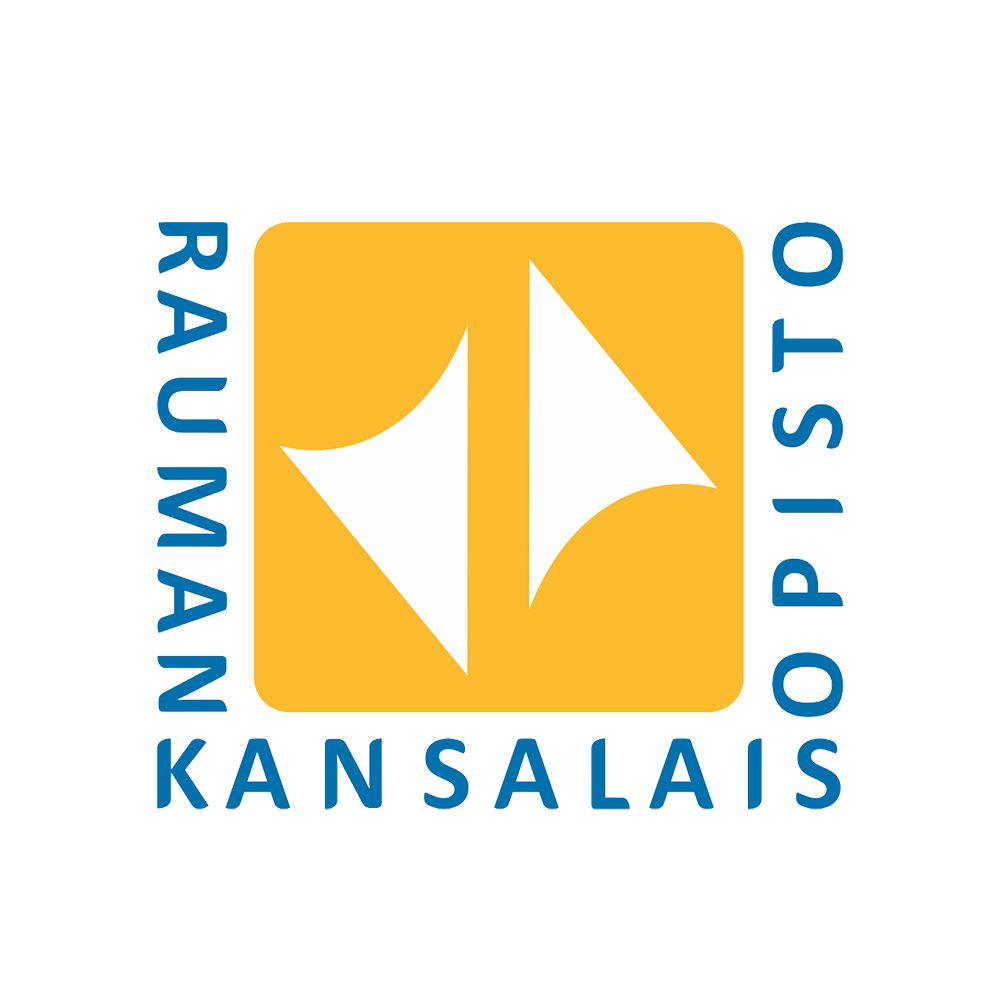Other Supplies
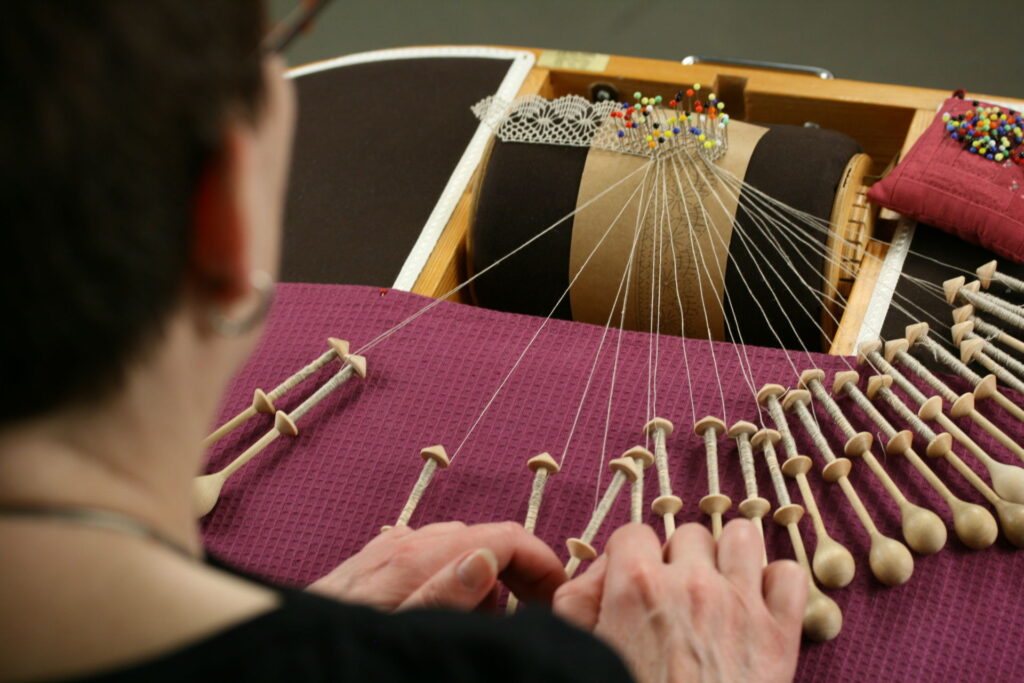
Bobbins
The bobbins are usually wooden and about 10-12 centimetres long. They have also been made of bone and plastic, and vary somewhat in shape and size from country to country. Different types of bobbins may be used for the same work. In general, the bobbins are not treated, but the lower part can be protected with a wood wax meant for indoor use if desired. For the coursework you will need a total of 28 bobbins, i.e. 14 pairs.
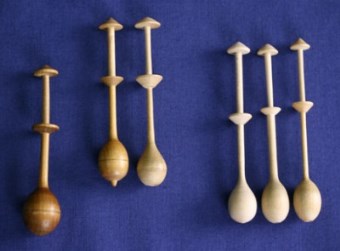
Pins and Pincushion
Use thin, glass-headed, good quality pins. A pack of 100 is enough for the coursework. Use a pincushion that you can attach to the lace-making pillow. Make sure that no fibres come loose from the pincushion. For example, a pincushion made of felt material is not suitable for a lace-maker.
Bobbin Holder and Bobbin Ladder
The bobbin holder and ladders keep the bobbins in order when they are not being used. A bobbin holder is a wooden spatula with an elastic band. The ladder is crocheted with medium thick wool yarn using crochet hook number 3 or 4. Crochet about 30 cm of chain stitches and make a second layer with *double crochet, ch 2, leave 2 ch of the first row in between.* Repeat *-*. Make sure that the thick ends of the pins fit through the holes in the ladder. Several ladders may be used on the same work at the same time.
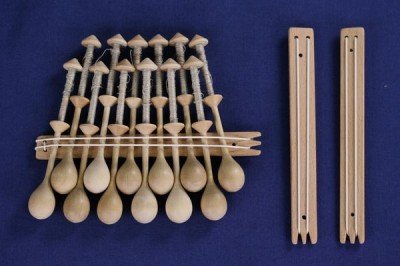
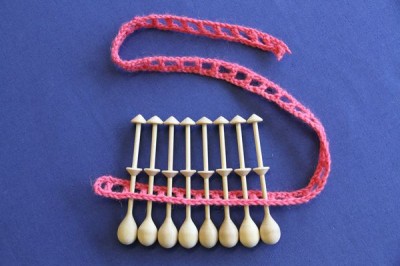
Chrochet pattern for the ladder
with stitch symbols
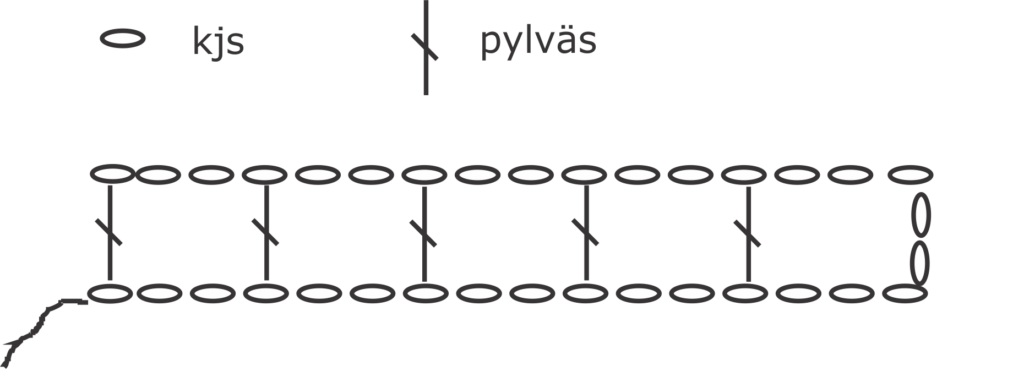
Please accept all cookies to see this content or watch content here.
Scissors
The most practical are small, sharp-tipped scissors.
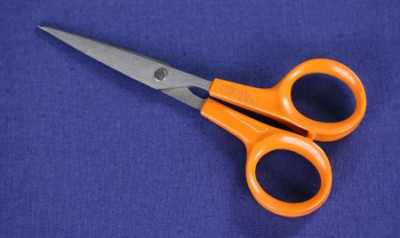
Pricking Tool and a Pricking Pad
You need a pricking tool to make a mynsteri. The spike should be quite thin, the best is the same thickness as the pins you will use. A porous insulation board, such as polystyrene sheet, is suitable as the pricking pad. The pattern is stamped on prespan, i.e. electrical insulation paper.
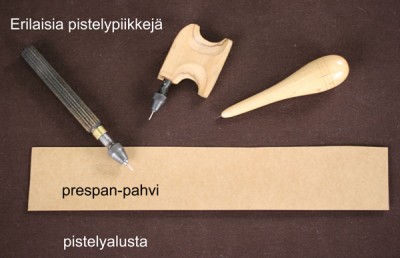
Towel
The towel protects the lace-making pillow from dirt and wear and helps keep the bobbins in place. Waffle-cloth and terrycloth towels are best because their surface is not slippery.
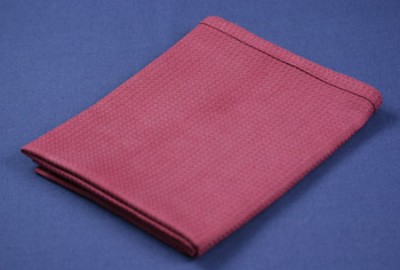
Marker
To draw a mynsteri, you need a water proof, 0,1mm fine line marker pen
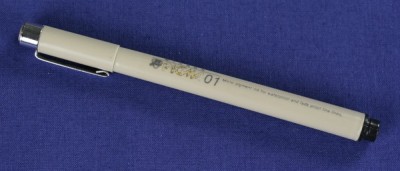
Rauma Lace
Technique
Lace-making is based on two movements with the bobbins, crossing and twisting. Combinations of these moves are called strokes.
